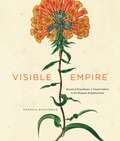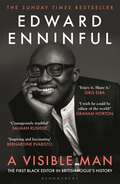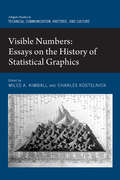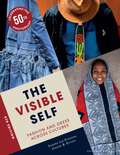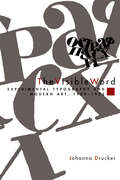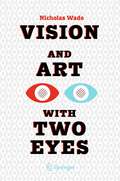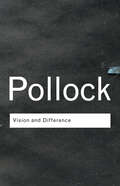- Table View
- List View
Visible Empire: Botanical Expeditions and Visual Culture in the Hispanic Enlightenment
by Daniela BleichmarBetween 1777 and 1816, botanical expeditions crisscrossed the vast Spanish empire in an ambitious project to survey the flora of much of the Americas, the Caribbean, and the Philippines. While these voyages produced written texts and compiled collections of specimens, they dedicated an overwhelming proportion of their resources and energy to the creation of visual materials. European and American naturalists and artists collaborated to manufacture a staggering total of more than 12,000 botanical illustrations. Yet these images have remained largely overlooked—until now. In this lavishly illustrated volume, Daniela Bleichmar gives this archive its due, finding in these botanical images a window into the worlds of Enlightenment science, visual culture, and empire. Through innovative interdisciplinary scholarship that bridges the histories of science, visual culture, and the Hispanic world, Bleichmar uses these images to trace two related histories: the little-known history of scientific expeditions in the Hispanic Enlightenment and the history of visual evidence in both science and administration in the early modern Spanish empire. As Bleichmar shows, in the Spanish empire visual epistemology operated not only in scientific contexts but also as part of an imperial apparatus that had a long-established tradition of deploying visual evidence for administrative purposes.
Visible Empire: Botanical Expeditions and Visual Culture in the Hispanic Enlightenment
by Daniela BleichmarBetween 1777 and 1816, botanical expeditions crisscrossed the vast Spanish empire in an ambitious project to survey the flora of much of the Americas, the Caribbean, and the Philippines. While these voyages produced written texts and compiled collections of specimens, they dedicated an overwhelming proportion of their resources and energy to the creation of visual materials. European and American naturalists and artists collaborated to manufacture a staggering total of more than 12,000 botanical illustrations. Yet these images have remained largely overlooked—until now. In this lavishly illustrated volume, Daniela Bleichmar gives this archive its due, finding in these botanical images a window into the worlds of Enlightenment science, visual culture, and empire. Through innovative interdisciplinary scholarship that bridges the histories of science, visual culture, and the Hispanic world, Bleichmar uses these images to trace two related histories: the little-known history of scientific expeditions in the Hispanic Enlightenment and the history of visual evidence in both science and administration in the early modern Spanish empire. As Bleichmar shows, in the Spanish empire visual epistemology operated not only in scientific contexts but also as part of an imperial apparatus that had a long-established tradition of deploying visual evidence for administrative purposes.
Visible Empire: Botanical Expeditions and Visual Culture in the Hispanic Enlightenment
by Daniela BleichmarBetween 1777 and 1816, botanical expeditions crisscrossed the vast Spanish empire in an ambitious project to survey the flora of much of the Americas, the Caribbean, and the Philippines. While these voyages produced written texts and compiled collections of specimens, they dedicated an overwhelming proportion of their resources and energy to the creation of visual materials. European and American naturalists and artists collaborated to manufacture a staggering total of more than 12,000 botanical illustrations. Yet these images have remained largely overlooked—until now. In this lavishly illustrated volume, Daniela Bleichmar gives this archive its due, finding in these botanical images a window into the worlds of Enlightenment science, visual culture, and empire. Through innovative interdisciplinary scholarship that bridges the histories of science, visual culture, and the Hispanic world, Bleichmar uses these images to trace two related histories: the little-known history of scientific expeditions in the Hispanic Enlightenment and the history of visual evidence in both science and administration in the early modern Spanish empire. As Bleichmar shows, in the Spanish empire visual epistemology operated not only in scientific contexts but also as part of an imperial apparatus that had a long-established tradition of deploying visual evidence for administrative purposes.
A Visible Man: The inspiring memoir from the first Black editor-in-chief of British Vogue
by Edward Enninful'Enjoy it. Share it.' IDRIS ELBA'This book is a revelation' DONATELLA VERSACE 'Edward's journey is a lesson for the culture and future generations to come' NAOMI CAMPBELL'Inspiring and fascinating' BERNARDINE EVARISTO'Courageously truthful' SALMAN RUSHDIEEdward Enninful has lived an extraordinary life.Here, for the first time, he shares the remarkable, inspiring story of his journey from a childhood bedroom in Ghana overlooking firing squads, to 1990s London – becoming the youngest-ever fashion director of i-D magazine at just eighteen years old. Now the first Black editor-in-chief of British Vogue, he has created game-changing images of everyone from Beyoncé to Meghan Markle, Kate Moss to Oprah Winfrey, Adele to Rihanna, and many more stars he now counts as friends.A Visible Man is the story of a husband, son, brother, friend – and icon. Taking us from the neon thrills of Soho clubs to nights spent on friends' sofas, this is the story of Edward's phenomenal grit and determination: of failures, loss, coming out, joy, hedonism, fame, love, heartbreak, sacrifice, ill health and era-defining achievements. It's the story of one man's revolutionary mission to change how we see the world, showing how unwavering passion and perseverance can allow anyone to make their mark – just like he did.
A Visible Man: The inspiring memoir from the first Black editor-in-chief of British Vogue
by Edward Enninful'Enjoy it. Share it.' IDRIS ELBA'This book is a revelation' DONATELLA VERSACE 'Edward's journey is a lesson for the culture and future generations to come' NAOMI CAMPBELL'Inspiring and fascinating' BERNARDINE EVARISTO'Courageously truthful' SALMAN RUSHDIEEdward Enninful has lived an extraordinary life.Here, for the first time, he shares the remarkable, inspiring story of his journey from a childhood bedroom in Ghana overlooking firing squads, to 1990s London – becoming the youngest-ever fashion director of i-D magazine at just eighteen years old. Now the first Black editor-in-chief of British Vogue, he has created game-changing images of everyone from Beyoncé to Meghan Markle, Kate Moss to Oprah Winfrey, Adele to Rihanna, and many more stars he now counts as friends.A Visible Man is the story of a husband, son, brother, friend – and icon. Taking us from the neon thrills of Soho clubs to nights spent on friends' sofas, this is the story of Edward's phenomenal grit and determination: of failures, loss, coming out, joy, hedonism, fame, love, heartbreak, sacrifice, ill health and era-defining achievements. It's the story of one man's revolutionary mission to change how we see the world, showing how unwavering passion and perseverance can allow anyone to make their mark – just like he did.
Visible Numbers: Essays on the History of Statistical Graphics
by Charles KostelnickBringing together scholars from around the world, this collection examines many of the historical developments in making data visible through charts, graphs, thematic maps, and now interactive displays. Today, we are used to seeing data portrayed in a dizzying array of graphic forms. Virtually any quantified knowledge, from social and physical science to engineering and medicine, as well as business, government, or personal activity, has been visualized. Yet the methods of making data visible are relatively new innovations, most stemming from eighteenth- and nineteenth-century innovations that arose as a logical response to a growing desire to quantify everything-from science, economics, and industry to population, health, and crime. Innovators such as Playfair, Alexander von Humboldt, Heinrich Berghaus, John Snow, Florence Nightingale, Francis Galton, and Charles Minard began to develop graphical methods to make data and their relations more visible. In the twentieth century, data design became both increasingly specialized within new and existing disciplines-science, engineering, social science, and medicine-and at the same time became further democratized, with new forms that make statistical, business, and government data more accessible to the public. At the close of the twentieth century and the beginning of the twenty-first, an explosion in interactive digital data design has exponentially increased our access to data. The contributors analyze this fascinating history through a variety of critical approaches, including visual rhetoric, visual culture, genre theory, and fully contextualized historical scholarship.
Visible Numbers: Essays on the History of Statistical Graphics (Routledge Studies In Technical Communication, Rhetoric, And Culture Ser.)
by Charles Kostelnick Miles A. KimballBringing together scholars from around the world, this collection examines many of the historical developments in making data visible through charts, graphs, thematic maps, and now interactive displays. Today, we are used to seeing data portrayed in a dizzying array of graphic forms. Virtually any quantified knowledge, from social and physical science to engineering and medicine, as well as business, government, or personal activity, has been visualized. Yet the methods of making data visible are relatively new innovations, most stemming from eighteenth- and nineteenth-century innovations that arose as a logical response to a growing desire to quantify everything-from science, economics, and industry to population, health, and crime. Innovators such as Playfair, Alexander von Humboldt, Heinrich Berghaus, John Snow, Florence Nightingale, Francis Galton, and Charles Minard began to develop graphical methods to make data and their relations more visible. In the twentieth century, data design became both increasingly specialized within new and existing disciplines-science, engineering, social science, and medicine-and at the same time became further democratized, with new forms that make statistical, business, and government data more accessible to the public. At the close of the twentieth century and the beginning of the twenty-first, an explosion in interactive digital data design has exponentially increased our access to data. The contributors analyze this fascinating history through a variety of critical approaches, including visual rhetoric, visual culture, genre theory, and fully contextualized historical scholarship.
The Visible Self: Fashion and Dress Across Cultures - with STUDIO
by Joanne B. Eicher Sandra Lee EvensonAll over the world, people get dressed, mostly for the same reasons. Why, then, do we look so different from each other? The answers lie in the constellations of factors that contribute to the human condition, from climate to conformity, gender expression to race and ethnicity.Beginning with the body as the organizing principle around which to study dress, this 50th anniversary edition of The Visible Self makes sense of humans as biological, social, and aesthetic creatures based on cross-disciplinary concepts and examples. It explores the daily act of dress in cultures around the world, using the word “dress” to describe the wide variety of behaviors connected to the act of adorning our bodies-or not-through the use of clothing, modifications, and/or supplements. Political economies are addressed holistically to understand the global world through contemporary topics such as racism and how dress can be used to sustain or rebel against dominant structures. With current examples and relevant readings in every chapter, the authors convey how dress can achieve standards of appearance and social ideals, relate to individuality and conformity in fashion, and communicate identity and character in the arts. Exploring the global mash-up of fashion, dress, culture, production, and sustainability-including life in a post-pandemic world-The Visible Self offers a powerful understanding of the way we look and how we look at others.New to this Edition: - Focus on the body as the organizing principle in the study of dress including additional insight on fashion and using this concept to define the target customer - Investigation of current issues such as race and the post-pandemic world - Updated readings, at the end of each chapter, with discussion questions that directly connect chapter concepts to reading content - Activities that apply chapter concepts to design, product development, merchandising, and everyday life STUDIO Features Include: - Links to third party video clips to help visualize how dress is used to identify the self - Self-assessment quizzes to test yourself on what you have just read - Flashcards of key terms and concepts covered in the book Instructor Resources - Instructor's Guide to help incorporate the text into your classroom - Test Bank to highly key concepts and test student comprehension on those concepts - PowerPoint Slides for every chapter
Visible Signs: An Introduction To Semiotics In The Visual Arts (PDF)
by David CrowBasic semiotic theories are taught in most art schools as part of a contextual studies program, but many students find it difficult to understand how these ideas might impact on their own practice. Visible Signs tackles this problem by introducing key theories and concepts, such as signs and signifiers, and language and speech, within the framework of visual communication. Each chapter provides an overview of a particular facet of semiotic theory, with inspiring examples from graphic design, typography, illustration, advertising and art to illustrate the ideas discussed in the text. Creative exercises at the end of the book will help exemplify these ideas through practical application. The third edition of Visible Signs features new material from international designers and new creative exercises to accompany each chapter. This new edition also features a new design and layout.
Visible Signs: An Introduction to Semiotics in the Visual Arts (Required Reading Range)
by David CrowBasic semiotic theories are taught in most art schools as part of a contextual studies program, but many students find it difficult to understand how these ideas might impact on their own practice. Visible Signs tackles this problem by introducing key theories and concepts, such as signs and signifiers, and language and speech, within the framework of visual communication. Each chapter provides an overview of a particular facet of semiotic theory, with inspiring examples from graphic design, typography, illustration, advertising and art to illustrate the ideas discussed in the text. Creative exercises at the end of the book will help exemplify these ideas through practical application. The third edition of Visible Signs features new material from international designers and new creative exercises to accompany each chapter. This new edition also features a new design and layout.
Visible Signs: An Introduction to Semiotics in the Visual Arts (Required Reading Range Ser.)
by David CrowBasic semiotic theories are taught in most art schools as part of a contextual studies program, but many students find it difficult to understand how these ideas might impact on their own practice. Visible Signs tackles this problem by introducing key theories and concepts, such as signs and signifiers, and language and speech, within the framework of visual communication. Each chapter provides an overview of a particular facet of semiotic theory, with inspiring examples from graphic design, typography, illustration, advertising and art to illustrate the ideas discussed in the text. Creative exercises at the end of the book will help exemplify these ideas through practical application. The fourth edition of Visible Signs includes new imagery and updated exercises, as well as coverage of propaganda, diversity in 'neutral' communication (like emojis), and issues related to social media representation.
Visible Signs: An Introduction to Semiotics in the Visual Arts
by David CrowBasic semiotic theories are taught in most art schools as part of a contextual studies program, but many students find it difficult to understand how these ideas might impact on their own practice. Visible Signs tackles this problem by introducing key theories and concepts, such as signs and signifiers, and language and speech, within the framework of visual communication. Each chapter provides an overview of a particular facet of semiotic theory, with inspiring examples from graphic design, typography, illustration, advertising and art to illustrate the ideas discussed in the text. Creative exercises at the end of the book will help exemplify these ideas through practical application. The fourth edition of Visible Signs includes new imagery and updated exercises, as well as coverage of propaganda, diversity in 'neutral' communication (like emojis), and issues related to social media representation.
Visible Signs: An Introduction to Semiotics in the Visual Arts (Required Reading Range Ser.)
by Mr David CrowBasic semiotic theories are taught in most art schools as part of a contextual studies program, but many students find it difficult to understand how these ideas might impact on their own practice. Visible Signs tackles this problem by introducing key theories and concepts, such as signs and signifiers, and language and speech, within the framework of visual communication. Each chapter provides an overview of a particular facet of semiotic theory, with inspiring examples from graphic design, typography, illustration, advertising and art to illustrate the ideas discussed in the text. Creative exercises at the end of the book will help exemplify these ideas through practical application. The third edition of Visible Signs features new material from international designers and new creative exercises to accompany each chapter. This new edition also features a new design and layout.
The Visible, the Sublime and the Sensus Communis: Kant’s Theory of Perception (SpringerBriefs in Philosophy)
by Tamar JaparidzeThis book argues that Kant develops a theory of perception in the Critique of Judgment from which one can redefine his entire project, viewing and using aesthetics as its backbone, from the transcendental aesthetic of the First Critique to the Critique of Taste in the Third. The author shows us how Kant exonerates the role of faculties that account for such judgments linked by inner senses, inclusive of sensus communis. By re-examining the role of the aesthetic within Kant's critical philosophy, the compelling force of the aesthetic turn is revealed in modern philosophy. The text includes Heidegger’s, Hegel’s and Diderot's complex relationship to Kant in this context.This text provides important scholarship for those interested in the Kantian influence on German Idealism, the aesthetic turn in the continental tradition, especially the Frankfurt school, and more generally, those interested in the encounter between philosophy and art in this historical context.
The Visible Word: Experimental Typography and Modern Art, 1909-1923
by Johanna DruckerEarly in this century, Futurist and Dada artists developed brilliantly innovative uses of typography that blurred the boundaries between visual art and literature. In The Visible Word, Johanna Drucker shows how later art criticism has distorted our understanding of such works. She argues that Futurist, Dadaist, and Cubist artists emphasized materiality as the heart of their experimental approach to both visual and poetic forms of representation; by mid-century, however, the tenets of New Criticism and High Modernism had polarized the visual and the literary. Drucker suggests a methodology closer to the actual practices of the early avant-garde artists, based on a rereading of their critical and theoretical writings. After reviewing theories of signification, the production of meaning, and materiality, she analyzes the work of four poets active in the typographic experimentation of the 1910s and 1920s: Ilia Zdanevich, Filippo Marinetti, Guillaume Apollinaire, and Tristan Tzara. Few studies of avant-garde art and literature in the early twentieth century have acknowledged the degree to which typographic activity furthered debates about the very nature and function of the avant-garde. The Visible Word enriches our understanding of the processes of change in artistic production and reception in the twentieth century.
Visio Services Quick Guide: Using Visio with SharePoint 2013 and Office 365
by Sahil Malik Srini SistlaIn this fast-paced 100-page guide, you’ll learn to load, display and interact with dynamic, data-powered Visio diagrams in SharePoint 2013 or Office 365.Visio Services Quick Guide gives you the tools to build anything from a simple project workflow to an organizational infrastructure diagram, powered by real data from SharePoint or SQL Server. Colleagues can load your diagrams entirely in the browser, meaning that a single Visio client installation is enough to get started. Readers with JavaScript experience will also find out how to get additional control over Visio diagrams using the JavaScript mashup API, and how to build a custom data provider. The final chapter covers some useful information on administering Visio Services.Get started bringing your Visio diagrams to life with the Visio Services Quick Guide.
Vision 2020
by Ervin LaszloThis revised edition of the classic text of the period provides both the student and the specialist with an informative account of post-Roman English society.
Vision 2020: Reordering Chaos For Global Survival
by Ervin LaszloThis revised edition of the classic text of the period provides both the student and the specialist with an informative account of post-Roman English society.
Vision Algorithms: International Workshop on Vision Algorithms Corfu, Greece, September 21-22, 1999 Proceedings (Lecture Notes in Computer Science #1883)
by Bill Triggs Andrew Zisserman Richard SzeliskiThis book constitutes the thoroughly refereed post-workshop proceedings of the International Workshop on Vision Algorithms held in Corfu, Greece in September 1999 in conjunction with ICCV'99.The 15 revised full papers presented were carefully reviewed and selected from 65 submissions; each paper is complemented by a brief transcription of the discussion that followed its presentation. Also included are two invited contributions and two expert reviews as well as a panel discussion. The volume spans the whole range of algorithms for geometric vision. The authors and volume editors succeeded in providing added value beyond a mere collection of papers and made the volume a state-of-the-art survey of their field.
Vision and Art with Two Eyes (Vision, Illusion and Perception #3)
by Nicholas WadeThis book celebrates binocular vision by presenting illustrations that require two eyes to see the effects of cooperation and competition between them. Pictures are flat but by printing them in different colours and viewing them through similarly coloured filters (included with the book) they are brought to life either in stereoscopic depth or in rivalry with one another. They are called anaglyphs and all those in the book display the ways in which the eyes interact. Thus, the reader is an integral element in the book and not all readers will see the same things. The history, science and art of binocular vision can be experienced in ways that are not usually available to us and with images made specifically for this book. The study of vision with two eyes was transformed by the invention of stereoscopes in the early 19th century. Anaglyphs are simple forms of stereoscopes that have three possible outcomes from viewing them – with each eye alone to see the monocular images, with both eyes to see them in stereoscopic depth or rivalry, or without the red/cyan glasses where they can have an appeal independent of the binocularity they encompass. Through the binocular pictures and the words that accompany them there will be an appreciation of just how remarkable the processes are that yield binocular singleness and depth. Moreover, the opportunities for expressing these processes are explored with many examples of truly binocular art.
Vision and Audience in Medieval Drama: A Study of The Castle of Perseverance (The New Middle Ages)
by Andrea Louise YoungThe earliest complete morality play in English, The Castle of Perseverance depicts the culture of medieval East Anglia, a region once known for its production of artistic objects. Discussing the spectator experience of this famed play, Young argues that vision is the organizing principle that informs this play's staging, structure, and narrative.
Vision and Difference: Feminism, Femininity and Histories of Art
by Griselda PollockGriselda Pollock provides concrete historical analyses of key moments in the formation of modern culture to reveal the sexual politics at the heart of modernist art. Crucially, she not only explores a feminist re-reading of the works of canonical male Impressionist and Pre-Raphaelite artists including Edgar Degas and Dante Gabriel Rossetti, but also re-inserts into art history their female contemporaries - women artists such as Berthe Morisot and Mary Cassatt. Pollock discusses the work of women artists such as Mary Kelly and Yve Lomax, highlighting the problems of working in a culture where the feminine is still defined as the object of the male gaze. Now published with a new introduction, Vision and Difference is as powerful as ever for all those seeking not only to understand the history of the feminine in art, but also to develop new strategies for representation for the future.
Vision and Difference: Feminism, Femininity and Histories of Art (Routledge Classics Ser.)
by Griselda PollockGriselda Pollock provides concrete historical analyses of key moments in the formation of modern culture to reveal the sexual politics at the heart of modernist art. Crucially, she not only explores a feminist re-reading of the works of canonical male Impressionist and Pre-Raphaelite artists including Edgar Degas and Dante Gabriel Rossetti, but also re-inserts into art history their female contemporaries - women artists such as Berthe Morisot and Mary Cassatt. Pollock discusses the work of women artists such as Mary Kelly and Yve Lomax, highlighting the problems of working in a culture where the feminine is still defined as the object of the male gaze. Now published with a new introduction, Vision and Difference is as powerful as ever for all those seeking not only to understand the history of the feminine in art, but also to develop new strategies for representation for the future.
Vision and Displays for Military and Security Applications: The Advanced Deployable Day/Night Simulation Project
by Keith K. NiallRealistic and immersive simulations of land, sea, and sky are requisite to the military use of visual simulation for mission planning. Until recently, the simulation of natural environments has been limited first of all by the pixel resolution of visual displays. Visual simulation of those natural environments has also been limited by the scarcity of detailed and accurate physical descriptions of them. Our aim has been to change all that. To this end, many of us have labored in adjacent fields of psych- ogy, engineering, human factors, and computer science. Our efforts in these areas were occasioned by a single question: how distantly can fast-jet pilots discern the aspect angle of an opposing aircraft, in visual simulation? This question needs some ela- ration: it concerns fast jets, because those simulations involve the representation of high speeds over wide swaths of landscape. It concerns pilots, since they begin their careers with above-average acuity of vision, as a population. And it concerns aspect angle, which is as much as to say that the three-dimensional orientation of an opposing aircraft relative to one’s own, as revealed by motion and solid form. v vi Preface The single question is by no means simple. It demands a criterion for eye-limiting resolution in simulation. That notion is a central one to our study, though much abused in general discussion. The question at hand, as it was posed in the 1990s, has been accompanied by others.
Vision and Navigation: The Carnegie Mellon Navlab (The Springer International Series in Engineering and Computer Science #93)
by Charles E. ThorpeMobile robots are playing an increasingly important role in our world. Remotely operated vehicles are in everyday use for hazardous tasks such as charting and cleaning up hazardous waste spills, construction work of tunnels and high rise buildings, and underwater inspection of oil drilling platforms in the ocean. A whole host of further applications, however, beckons robots capable of autonomous operation without or with very little intervention of human operators. Such robots of the future will explore distant planets, map the ocean floor, study the flow of pollutants and carbon dioxide through our atmosphere and oceans, work in underground mines, and perform other jobs we cannot even imagine; perhaps even drive our cars and walk our dogs. The biggest technical obstacles to building mobile robots are vision and navigation-enabling a robot to see the world around it, to plan and follow a safe path through its environment, and to execute its tasks. At the Carnegie Mellon Robotics Institute, we are studying those problems both in isolation and by building complete systems. Since 1980, we have developed a series of small indoor mobile robots, some experimental, and others for practical applicationr Our outdoor autonomous mobile robot research started in 1984, navigating through the campus sidewalk network using a small outdoor vehicle called the Terregator. In 1985, with the advent of DARPA's Autonomous Land Vehicle Project, we constructed a computer controlled van with onboard sensors and researchers. In the fall of 1987, we began the development of a six-legged Planetary Rover.
